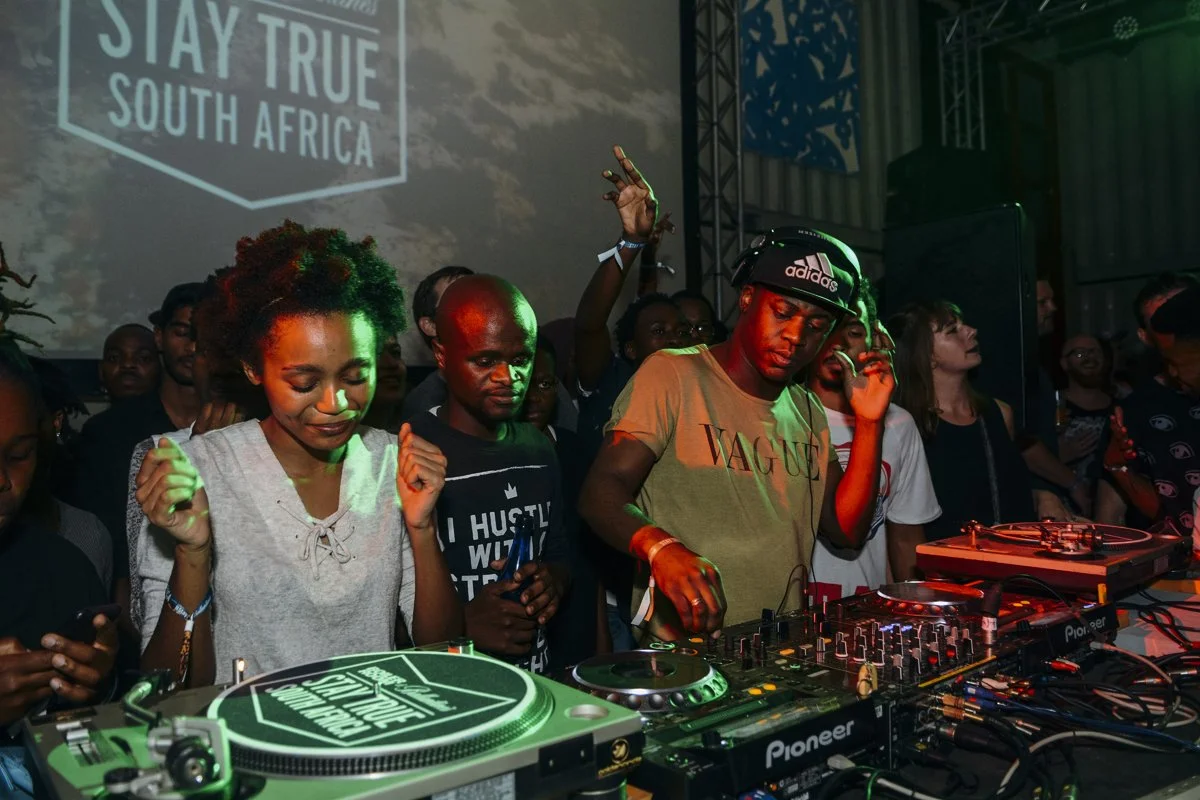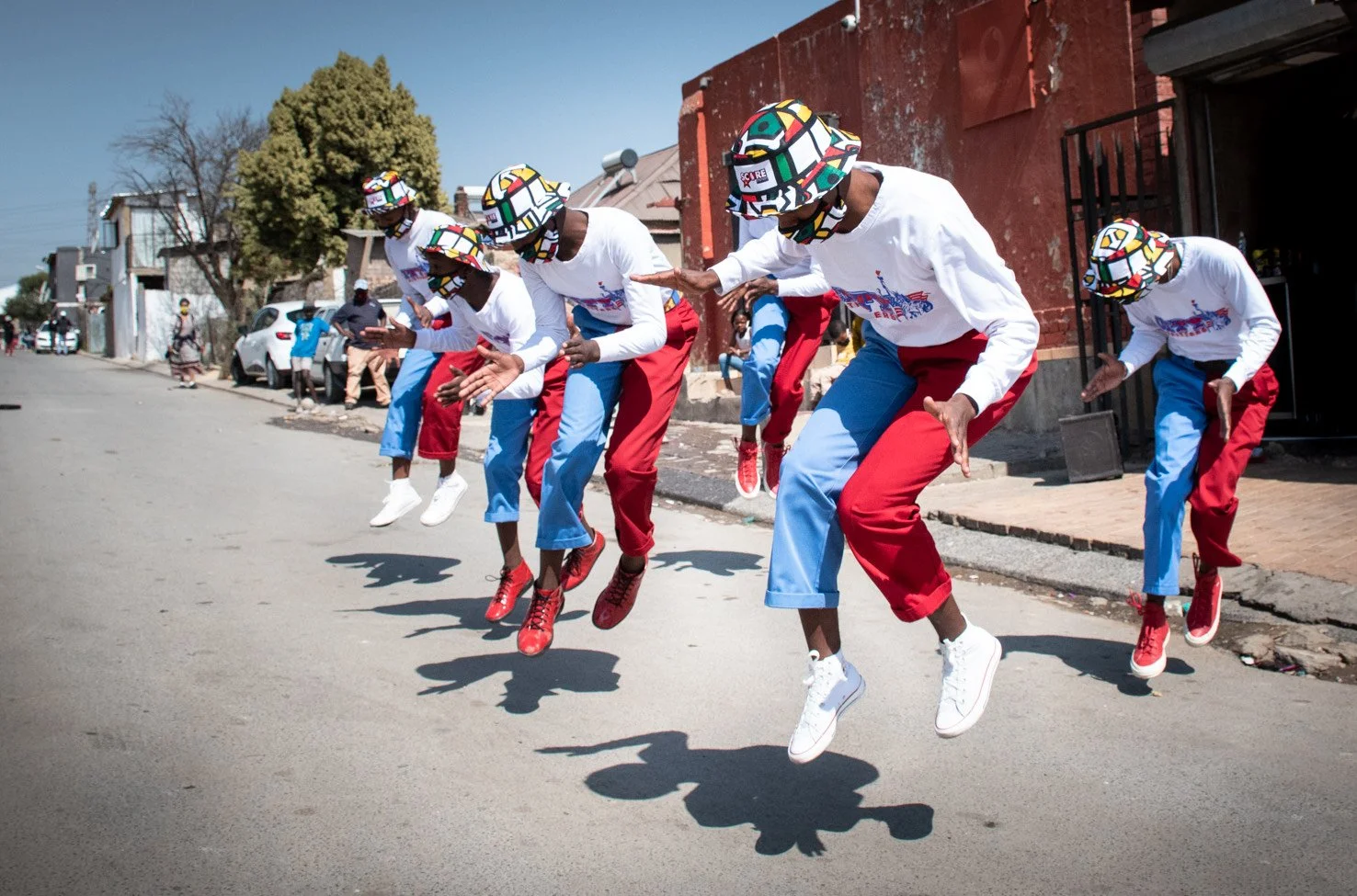South African music has a rich and diverse history, drawing from a range of cultural influences and musical traditions. One of the latest musical genres to emerge from this vibrant scene is Amapiano. This exciting new sound has quickly gained popularity both within South Africa and around the world, thanks to its infectious beats, catchy melodies, and unique blend of genres.
Amapiano is a genre of house music that originated in the townships of South Africa's Gauteng province, particularly in the cities of Pretoria and Johannesburg. It is characterised by its slow, hypnotic beats, deep basslines, and a distinct piano sound that gives the genre its name. While Amapiano is primarily an instrumental genre, it also features the occasional vocal hook, often in the form of a repetitive chant or call-and-response pattern.
Since the 1980s, South Africa has been a hub for electronic and dance music — from “bubblegum”/township pop to kwaito, bacardi, soulful, deep, tribal, Afro house, gqom, Afro tech, and many other variations in between. Each generation has pioneered a new subgenre that emerges either locally, or one imported and adapted for the local market. Amapiano, or “‘piano” as it is affectionately known, is the country’s latest explosive take on house music.
The origins of Amapiano can be traced back to the mid-2010s, when producers in the townships began experimenting with slower tempos and incorporating elements of Kwaito, a South African genre that combines house music with traditional African rhythms. Over time, Amapiano evolved into its own distinct sound, drawing influences from a range of other genres, including jazz, Afrobeat, lounge music and hip-hop.
One of the key factors in Amapiano's rise to prominence has been the genre's popularity on social media platforms like TikTok and Instagram. Many of the genre's most popular songs have gone viral on these platforms, thanks to their catchy melodies and danceable beats. This has helped to introduce Amapiano to audiences around the world, who may not have otherwise been familiar with South African music.
However, Amapiano's popularity is not limited to online platforms. The genre has also gained a strong following in South African clubs and at music festivals, where its slow, hypnotic beats create a unique atmosphere on the dancefloor. Amapiano has also started to influence other genres of South African music, with elements of the sound appearing in songs by established artists from other genres, such as hip-hop and Gqom.
One of the most exciting things about Amapiano is its potential for cross-cultural collaboration. While the genre has its roots in South African townships, it has already begun to attract attention from international producers and artists. This has led to a number of collaborations between South African Amapiano producers and artists from other parts of the world, including Nigeria, the UK, and the US. These collaborations have helped to bring Amapiano to new audiences and to expand the genre's sonic palette even further.
There are many talented artists who have helped to popularize Amapiano both in South Africa and around the world. Some of the most prominent Amapiano artists include:
MFR Souls - Love You Tonight ft. DJ Maphorisa, Sha Sha, Kabza De Small
Kabza De Small
Kabza De Small - Widely regarded as one of the pioneers of the Amapiano sound, Kabza De Small has released a string of successful albums and collaborations over the past few years. He has worked with a number of other top Amapiano artists, including DJ Maphorisa and MFR Souls.
DJ Maphorisa - With a career spanning more than a decade, DJ Maphorisa is one of the most influential producers in South African music. He has played a key role in popularizing amapiano, both as a solo artist and as part of the group Scorpion Kings.
Focalistic - Hailing from Pretoria, Focalistic is one of the rising stars of the amapiano scene. His breakout hit "Ke Star" has been a massive success both in South Africa and internationally, and he has since released a number of other popular songs.
MFR Souls - This amapiano duo from Katlehong has been making waves in the genre since 2017. Their hit song "Love You Tonight" has been a massive success, and they have since released a number of other popular tracks.
Sha Sha - Born in Zimbabwe but based in South Africa, Sha Sha is a female artist that has made a name for herself in the Amapiano scene. She won the BET Award for Best New International Act in 2020 and has released a number of successful singles and collaborations.
HOUSE MUSIC ROOTS
Boiler Room & Ballantine's Stay True South Africa
These are just a few of the many talented artists who have helped to popularize Amapiano in South Africa and around the world. With new artists and collaborations emerging all the time, it is clear that Amapiano will continue to evolve and grow in the years to come.
Amapiano, like many other genres of South African music, has its roots in house music. House music first gained popularity in South Africa in the late 1980s and early 1990s, as the country was undergoing a period of political transition and social change. The genre quickly became associated with the emerging club scene in South African cities, particularly in Johannesburg and Durban.
House music was originally influenced by a range of genres, including disco, funk, and soul, as well as the electronic sounds coming out of Chicago and Detroit in the United States. However, South African producers quickly began to put their own spin on the genre, incorporating elements of traditional African rhythms and instruments.
Over time, house music in South Africa began to diversify, with a range of sub-genres emerging, including kwaito, gqom, and of course, Amapiano. Each of these sub-genres has its own unique sound and cultural influences, but they all share a common foundation in the house music that first emerged in South Africa in the 1990s.
Amapiano, in particular, draws heavily on the rhythmic and melodic elements of house music, as well as the use of electronic instruments and production techniques. However, Amapiano also incorporates elements of jazz, Afrobeat, and hip-hop, giving the genre its distinctive sound.
Despite the challenges of the COVID-19 pandemic, Amapiano has continued to thrive in South Africa and around the world. The genre's slow, hypnotic beats and catchy melodies have helped to create a sense of connection and community among listeners, even in a time of social distancing.
Overall, amapiano represents the latest chapter in the rich and diverse history of house music in South Africa. By drawing on a range of cultural influences and musical traditions, it has created a sound that is uniquely South African but also resonates with audiences around the world.
SA HIP HOP CULTURE
South African Rapper Blxckie
On of the most prominent cultural influences on Amapiano is South African Hip hop. Hip hop has had a significant influence on South African music, and Amapiano is no exception. Amapiano artists frequently incorporate hip hop beats and lyrical flows into their music, creating a unique blend of the two genres.
One of the ways in which hip hop has influenced Amapiano is through the use of sampling. Many Amapiano tracks feature samples of classic hip hop tracks, either as a nod to the genre's roots or as a way of creating a connection between the two genres. In addition, many Amapiano producers and DJs also incorporate hip hop-style scratching and mixing techniques into their sets, adding another layer of influence from the genre.
Hip hop culture has also had an impact on Amapiano, particularly in terms of fashion and style. Many Amapiano artists and fans embrace hip hop-inspired clothing and accessories, such as bucket hats, oversized T-shirts, and sneakers. In addition, the focus on individuality and self-expression that is central to hip hop culture is also reflected in Amapiano, with artists encouraged to carve out their own unique sound and style.
Lyrically, Amapiano also draws on hip hop's tradition of social commentary and storytelling. Many amapiano tracks feature lyrics that address social and political issues, as well as personal experiences and struggles. This is particularly evident in the work of artists like Focalistic, who frequently incorporates elements of his own life and upbringing into his music.
Overall, the influence of hip hop on Amapiano has helped to create a sound that is both fresh and familiar, drawing on the strengths of both genres while also pushing the boundaries of what is possible. With each passing year, it is clear that the relationship between Amapiano and hip hop will only continue to grow and evolve, creating new and exciting sounds for audiences around the world.
ToWnship music
Patsula Dance Tradition
South African Township
To understand the links between apartheid, townships, and Amapiano, it is important to first understand the history of apartheid in South Africa. Apartheid was a system of racial segregation and discrimination that was enforced by the South African government from 1948 to 1994. Under apartheid, black South Africans were systematically denied access to the same opportunities and resources as white South Africans, including education, healthcare, and employment.
One of the key legacies of apartheid was the creation of townships, which were designated areas where black South Africans were forced to live. These townships were often overcrowded and under-resourced, with inadequate housing, sanitation, and infrastructure. However, despite the difficult conditions, townships also became centers of creativity and cultural innovation, as black South Africans used music, dance, and other forms of expression to resist the oppressive system of apartheid.
Amapiano has its roots in the townships, where it first emerged as a form of house music in the early 2010s. The genre's slow, hypnotic beats and catchy melodies quickly caught on among young people in the townships, and it soon became a staple of local clubs and parties.
In many ways, Amapiano can be seen as a continuation of the tradition of cultural resistance that emerged in the townships during apartheid. By creating music that reflected their own experiences and aspirations, Amapiano artists and fans were able to assert their identity and reclaim their cultural heritage, even in the face of adversity.
In addition, Amapiano has also been shaped by the realities of life in the townships. Many of the genre's lyrics address issues such as poverty, unemployment, and violence, reflecting the experiences of those who live in these marginalized communities. At the same time, Amapiano's emphasis on dance and celebration also serves as a form of escapism, providing a space for people to come together and forget their troubles for a while.
Overall, the links between apartheid, townships, and Amapiano highlight the complex interplay between music, culture, and politics in South Africa. While apartheid may be officially over, its legacy continues to shape the lives and experiences of millions of South Africans, and Amapiano represents just one of the many ways in which people are continuing to resist and reclaim their cultural heritage in the post-apartheid era.
AFRICAN CULTURE
One of the defining ways reclaiming of cultural heritage can be seen in the music is through language. One of the key characteristics of Amapiano is its use of indigenous South African languages and cultural references. Many Amapiano tracks feature lyrics in languages such as Zulu, Xhosa, and Sotho, among others, and draw on cultural traditions such as dance and storytelling.
This emphasis on native South African culture is a reflection of the genre's roots in the townships, where many people still speak indigenous languages and maintain strong ties to their cultural heritage. By incorporating these languages and cultural references into their music, Amapiano artists are able to create a sound that is both authentically South African and deeply connected to the experiences and traditions of their fans.
In addition to the use of indigenous languages, Amapiano also draws on a variety of musical styles and influences from across South Africa. For example, many tracks feature traditional African instruments such as the marimba, while others incorporate elements of traditional gospel music or Kwaito, a popular South African genre that emerged in the 1990s.
This emphasis on native culture and language is also reflected in the dance styles associated with Amapiano. Many of these dances, such as the "vosho" and the "gwara gwara," draw on traditional South African dance forms, and have become popular among young people in the townships and beyond.
The influence of language and native South African culture on Amapiano serves as a reminder of the rich and diverse cultural heritage of the country, and underscores the importance of celebrating and preserving these traditions for future generations. Through their music, Amapiano artists are helping to create a new generation of South Africans who are proud of their cultural heritage and eager to share it with the world.
GLOBAL INFLUENCE
Davido, Focalistic - Champion Sound (Official Video)
In recent years, Amapiano has become increasingly popular around the world, as the genre's infectious rhythms and catchy melodies have captured the attention of music fans in a variety of countries and cultures. One of the key drivers of this global popularity has been the genre's ability to blend elements of different musical styles and genres, creating a sound that is both familiar and fresh.
One of the key influences on Amapiano has been Afrobeats, a popular genre of music that originated in West Africa and has since spread around the world. Like Amapiano, afrobeats is known for its catchy rhythms and upbeat melodies, and the two genres share many musical elements, including the use of electronic instruments and the incorporation of traditional African rhythms and melodies.
Similarly, in Nigeria, Amapiano has become a popular choice among DJs and music producers, who have been incorporating the genre's distinctive rhythms and melodies into their own tracks. This cross-cultural exchange has helped to create a sense of musical unity and collaboration between South Africa and other African nations, as artists from across the continent come together to create and share their music. Other African Countries influenced by the Amapiano Scene include:
Zimbabwe - Zimbabwean music has always had a strong influence from South Africa, and Amapiano is no exception. Many Zimbabwean artists have embraced the Amapiano sound, incorporating it into their music. The genre has become particularly popular in Harare, where it has gained a dedicated following.
Zambia - Zambian music has traditionally been influenced by Congolese and Zambian traditional music. However, in recent years, the influence of Amapiano has become increasingly evident. Zambian artists have started to incorporate Amapiano elements into their music, particularly in the dancehall and hip-hop genres.
Botswana - Botswana's music scene has been heavily influenced by South African music, and Amapiano is no exception. The genre has become increasingly popular in Botswana, particularly in the urban centers of Gaborone and Francistown. Many Botswana artists have also started to incorporate Amapiano elements into their music.
Namibia - Namibian music has traditionally been influenced by South African and Congolese music. However, Amapiano has started to gain popularity in the country, particularly in the capital city, Windhoek. Many Namibian artists have started to incorporate Amapiano elements into their music, adding a fresh and modern twist to traditional Namibian music.
Kenya - Amapiano has been embraced by both the mainstream and underground music scenes. Many Kenyan artists have started to incorporate Amapiano elements into their music, creating a unique fusion of Amapiano and Kenyan music. The genre has gained a dedicated following among the youth in Nairobi and other urban centers.
Tanzania - Amapiano has become increasingly popular in recent years. Many Tanzanian artists have embraced the genre, incorporating it into their music. The genre has gained a dedicated following among the youth in Dar es Salaam and other urban centers.
Uganda - Amapiano is still a relatively new genre, but it has started to gain popularity among the youth. Many Ugandan artists have started to incorporate Amapiano elements into their music, adding a fresh and modern twist to traditional Ugandan music.Overall, the globalisation of Amapiano serves as a testament to the genre's universal appeal and its ability to connect people from different cultures and backgrounds through the power of music. As the genre continues to evolve and grow, it is likely that we will see even more cross-cultural exchange and collaboration, as artists from around the world come together to create a new and exciting musical landscape.
One of the countries where Amapiano has gained significant popularity is the United Kingdom, where the genre has been embraced by fans of electronic music and dance culture. In recent years, a number of UK-based DJs and producers have begun incorporating Amapiano elements into their tracks, helping to spread the genre's influence even further afield. Amapiano has had a significant impact on club and party culture among the African Diaspora. The genre's infectious beats and danceable rhythms have made it a popular choice at parties and clubs in cities like London, New York, and Paris. For many in the African Diaspora, Amapiano has become a way to embrace and celebrate their African identity. The genre's fusion of traditional African music with modern beats and sounds resonates with many in the African Diaspora who are looking for ways to connect with their African heritage. Collaboration with African artists Amapiano has also led to collaborations between African artists and those of African descent living outside of the continent.
However its not just underground Amapiano has recently made its way into the mainstream music scene in Europe and America, with artists like Major Lazer, Diplo, and Beyoncé incorporating Amapiano elements into their music. This has led to increased exposure for the genre, with many people outside of Africa becoming fans of the sound. Collaborations with international artists South African Amapiano artists have started to collaborate with international artists, further increasing the genre's popularity. Amapiano has also influenced fashion in Europe and America, with many people adopting the streetwear styles popularised by Amapiano artists. The genre's emphasis on comfort and self-expression has led to an increase in the popularity of oversized clothing, bold prints, and bright colors.
The log drum, also known as the marimba or xylophone, is a key element in the rhythmic structure of Amapiano music. The instrument is often used to create the distinctive melodies and rhythms that are a hallmark of the genre, and is a key part of the sound that has made Amapiano so popular around the world.
In addition to the log drum, dancing is also an important element of Amapiano culture. The genre's infectious rhythms and upbeat melodies have inspired a variety of dance styles and moves, many of which have become popular among fans in South Africa and beyond.
THE LOG DRUM
Overall, the importance of the log drum and dancing in Amapiano underscores the genre's focus on rhythm and movement, and highlights the importance of physical expression in the creation and enjoyment of music. Whether it's through the intricate melodies of the log drum or the infectious rhythms of the dance floor, Amapiano music is all about getting people moving and feeling the beat, and creating a sense of community and shared experience through the power of music and dance.
One of the most significant ways Amapiano is influencing Nigerian Afrobeats is through the infusion of its unique sound into the music. Nigerian artists are incorporating the distinct Amapiano beats, melodies, and instrumentals into their songs, creating a fusion that appeals to both Nigerian and South African audiences. This has led to collaborations between Nigerian and South African artists, such as Davido's "La La" featuring Ckay and Focalistic, and "Ke Star" by Focalistic featuring Davido.
Another way Amapiano is influencing Nigerian Afrobeats is through the dance culture that comes with the genre. Amapiano has its dance culture that involves unique dance moves, and Nigerian artists are incorporating these dance moves into their music videos and live performances. This has led to the creation of a new dance culture in Nigeria, which has contributed to the popularity of Afrobeats globally.
Furthermore, the success of Amapiano in South Africa has inspired Nigerian producers and artists to explore different sounds and experiment with their music. This has led to the creation of unique and diverse sounds, which have expanded the Afrobeats genre's range and appeal.
Amapiano has had a significant influence on Nigerian Afrobeats, and the fusion of these two genres has resulted in the creation of unique and exciting sounds. The collaboration between Nigerian and South African artists, the incorporation of Amapiano beats, melodies, and instrumentals, and the dance culture associated with the genre has made Afrobeats more popular and appealing to a global audience.
OVERVIEW
In conclusion, Amapiano is a fascinating and exciting addition to the diverse world of South African music. It’s slow, hypnotic beats, deep basslines, and unique piano sound have already captured the hearts of audiences around the world. With its potential for cross-cultural collaboration and innovation, it is clear that Amapiano will continue to make its mark on the global music scene for years to come.








